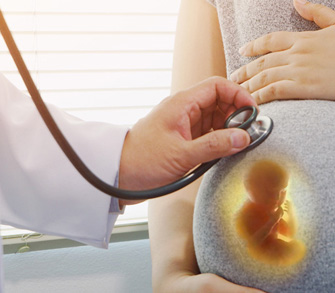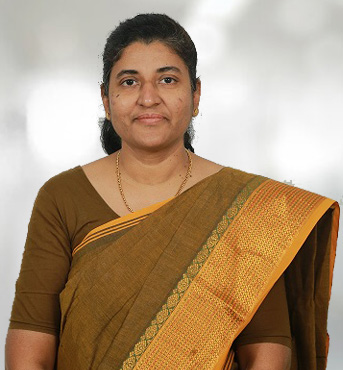department
Fertility Medicine
janani fertility centre is where “hope meets life”.We are committed to provide evidence based, individualized quality care in a transparent and an ethical way.
Services Available:
Janani, Reproductive Medicine Unit is dedicated to infertility diagnosis and treatment. We provide complete work up of infertile couples. Since 2012, it has made possible hundreds of infertile couples, to take home healthy babies.
The unit provides various Assisted Reproduction technologies such as:
- Intrauterine insemination (IUI)
- In vitro fertilization (IVF)
- Intracytoplasmic sperm injection (ICSI)
- Freezing of eggs , sperms & embryos
- Blastocyst culture
- Surgical sperm Extraction

- Donor programmes
- Surrogacy
- Laparoscopy/ Hysteroscopy Fertility enhancing procedures
Advanced Male Factor evaluation-DNA Fragmentation index,Y chromosome microdeletion
Patient Work up
Infertility is inability of a couple to conceive following 12 months of exposure to pregnancy. Any couple worried about their fertility is seen, regardless of the duration of their infertility.
Evaluation is always done as a couple irrespective of, who has the problem. So it is important for both husband and wife to see the doctor.
We have individualized protocols for finding your problems and effectively addressing them. With us, you can experience personal care, compassionate support and evidence based treatment. Initial investigations are inexpensive, non-invasive and likely to lead to useful information.
Janani – Facilities
The Embryology Lab:
The heart of an IVF program is a well equipped IVF lab with dedicated team of embryologists. Janani IVF lab has clean room technology-HVAC System with state of the art equipments.
ART – Treatment:
We have entire services under reproductive medicine including intrauterine insemination (IUI), invitro fertilization (IVF) & ICSI
Ovulation Induction
It’s done for anovulation like PCOS and unexplained infertility. Medication like clomiphene citrate or letrozole, Gonadotropins injections are used for this. Ultrasound is done to study the follicular growth. The injection for rupture of follicle is given when the follicle is roughly 19-20 mm.Egg release occurs 36 hours after injection. Natural intercourse for 2 days or IUI is done during this time.
Intrauterine Insemination (IUI)
It is a procedure in which sperms are separated from the semen and placed into the uterus through a fine catheter. Intrauterine insemination is recommended for men with slightly compromised semen parameters, cervical factor infertility, Stage I or II endometriosis with patent tubes. IUI can be combined with ovulation induction for ovulatory dysfunction and unexplained infertility.
Invitro fertilization (IVF)
IVF is the procedure in which the women’s eggs are removed vaginally and fertilized with sperms in the lab set up. It is a prominent treatment for infertility and is recommended when other techniques have failed to produce desired results.
Patient selection:
- Tubal damage
- Severe endometriosis
- Polycystic ovarian disease
- Unexplained infertility
- Repeated failed IUI
- Low semen counts
Steps of IVF procedure
Controlled ovarian stimulation:
IVF cycle seek to produce multiple oocytes in order to obtain several embryos that facilitate choice in the selection of embryos for transfer, maximizing the chance of a successful cycle. From second or third day of menstrual cycle, gonadotropin injections are started daily, continued for 10-12 days till the follicle reach a size of 18mm. The number of eggs produced by each patient varies according to ovarian response. Precautions are taken to avoid dangerous over stimulation which can happen in PCOS. When follicles reach around 18mm, an injection for ‘trigger’ is administered, 35 hours after trigger, process of egg retrieval is performed.
Trans vaginal Oocyte retrieval (Egg pickup)
Trans vaginal ultrasound guided needle aspiration using a suction pump. It’s done under sedation. So painless. Each follicle is aspirated and embryologist screen the fluid from follicles and pick up eggs under microscope.
Fertilization
The eggs retrieved are incubated in culture media for two hours. Fresh ejaculated seminal fluid is prepared to concentrate motile spermatozoa. There are two methods of fertilizing the eggs. Conventional IVF or Intra cytoplasmic sperm injection (ICSI).
In conventional IVF, eggs are incubated with sperms, one sperm fertilize the egg. ICSI is the process of injecting the selected best quality sperm in to the mature egg, using a micromanipulator and special inverted microscope. After 18-20 hours fertilization check is performed. The fertilized eggs are called embryos and they are further cultured in incubator at 37oC for 2- 5 days when the process of embryo transfer is carried out.
Embryo Transfer
The best quality embryos are transferred back in to the uterus under ultrasound guidance. Usually two embryos are transferred .After embryo transfer, medicines to support the pregnancy are given and blood test to check the result is carried out 14 days of embryo transfer.
ICSI
ICSI is done in cases with low count, motility and morphology.
- Previous low or failed fertilization with IVF
- Sperm obtained by surgical sperm retrieval techniques.
- Other recent indications.
- Low number of oocytes
- Older women
- Mild male factor infertility
ICSI Procedure
Oocytes cleaned and denuded of all surrounding cells. Mature oocytes (Metaphase II) are selected and injected with single sperm. ICSI requires specialized micromanipulator and special holding pipettes. ICSI needle pick up sperm, immobilize it and injected into cytoplasm of the egg. Fertilization rate is around 80% per injected oocyte.
SURGICAL SPERM RETRIEVAL
Surgical Sperm retrieval may be a treatment option for men with
- An obstruction preventing sperm release (due to injury or infection).
- Ejaculation problem.
- Congenital absence of vas deferens – the tube that drains the sperm from the testicle
- Vasectomy
- Non obstructive azoospermia- Testicles producing very low numbers of sperm that won’t reach vas.
Here sperms can be collected directly from the testis. This is done by taking tissues from testes by a four quadrant biopsy or micro TESE. In obstructive cases, sperms can be aspirated from epididymis as well. The tissues or aspirate are examined under microscope to look for presence of sperm.
In men with obstructive azoospermia, there is a very high chance of recovering sperm (>90%). In men with non-obstructive azoospermia, the chances of recovering sperm is approximately 40% .If we are successful at retrieving sperm, pregnancy treatment can be done through ICSI . The techniques are
PESA (Percutaneous Epididymal Sperm Aspiration)
It is collection of sperm through a fine needle directly from the epididymis, where sperm is stored, after it is formed in the testes.
TESA (Testicular Sperm Aspiration)
It is collection of sperm through 18 G needle directly from testis.
TESE (Testicular Sperm Extraction)
It is the collection of sperm from a biopsy or several biopsies from the testicular tissue after making a small incision in the scrotal skin.
The above procedures are carried out either under light general anesthesia combined with use of a local anesthetic. It requires only a few hours of hospital stay. The material collected will be examined and you will be advised on the same day about the quality of the tissue and whether there is any sperm present. Any tissue with sperm will be frozen and kept in storage for use at a later stage. These specimens are then thawed and used to inject eggs obtained during ART treatment using the technique of ICSI.
FERTILITY ENHANCING LAPAROSCOPIC AND HYSTEROSCOPIC SURGERY
Laparoscopy and Hysteroscopy are very important part of evaluation as well as treatment in infertility. They enable us to see and treat at the same sitting. The process itself can make couples conceive naturally even without treatment. Even those need assisted reproduction, some of these surgical procedures improve results of these treatment.
Both laparoscopy and hysteroscopy are done together as it provides a complete assessment of reproductive organs. The procedure is painless and is done under general anesthesia. The patient can return to daily activities in 2-3 days.
Laparoscopy is done through a thin telescope inserted through belly buton. We examine the reproductive organs and are able to diagnose tubal blocks, adhesions, conditions like endometriosis, pelvic infections, fibroids etc..
The advantage of laparoscopy is that most of these problems can be treated at the same sitting.
- Adhesiolysis, correction of tubal block
- Ovarian endometriotic cyst removal
- Myomectomy (Fibroid removal)
These surgical procedures enhance fertility helping most of couples to conceive normally or with minimal treatment.
Hysteroscopy is the process of visualizing inner lining of uterus with thin telescope introduced into uterus through vagina. It helps in diagnosing fibroids disturbing cavity, adhesions, polyps and infections of endometrium.
Adhesion release, polyp removal and sub mucous fibroid removal etc. can be done through hysteroscopy.
The advantage in our centre is that the infertility specialist herself perform these surgical procedures, conserving the fertility potential with utmost care giving the best results.
Donor programmes
Donor Oocyte Programme
The donor oocyte (egg) programme is a boon for women who are unable to produce healthy oocytes or who have chromosomal abnormalities or who have had repeated IVF failures.
Before donation is undertaken, oocyte donors are screened for infection and genetic diseases in accordance with the guidance issued by ICMR. Anonymity of donor is maintained. Consent form are signed by the donor, her husband and the recipient couples to avoid legal problems.
Who qualifies for the donor egg programme?
- Premature ovarian failure
- Surgical removal of ovaries
- Women in the peri menopausal group
- Certain cases with a high risk of transmitting a genetic disorder to the children.
- Repeated IVF failure, markedly reduced ovarian reserve, poor quality oocytes.
Donors undergo ovarian stimulation as in IVF cycles. The recipient’s uterine lining is prepared by using sequential oral dose of estrogen followed by estrogens and progesterone to mimic natural cyclical hormonal pattern and allow treatment to be synchronized with the donor stimulation cycle
Donor Sperm Insemination
This option is for those where no sperms retrieved from testes in azoospermia. Sperm donation is an anonymous process, only frozen sperm used for this purpose. A sperm donor is screened for a variety of infections including hepatitis, HIV and cytomegalovirus.
Surrogacy Programme
Surrogates are commonly used for women with
- Surgical removal or congenital absence of the uterus
- Recurrent miscarriage
- Untreatable problems of uterus – uterine or endometrial scarring (Asherman’s Syndrome)/ Adenomyosis)
- Carrying a pregnancy impose a significant risk to the health of the woman.
The intended parents create embryos by IVF/ICSI that are transferred to the surrogate mother. The surrogate mother carries the child, but maintains no genetic link. . The necessary legal documents are cleared before the treatment to avoid any future complications in custody of child.
CRYOPRESERVATION OF GAMETES& EMBRYOS
Embryo freezing (cryopreservation) is a process to freeze and store embryos for later use. An embryo is an egg that has been fertilized by a sperm. Embryo freezing is done in cases
- To postpone embryo transfer after an egg is already fertilized, if uterine conditions are not optimum.
- Freezing extra embryos, for future use, in case early attempts at fertility treatment fail or for a second baby.
- Want to delay pregnancy treatment to a later date – fertility preservation
like in cancer cases, where chemo/ radiation therapy affect their ability to get pregnant.
Good quality embryos survive the freeze – thaw process
Fertility programs also offer sperm and egg freezing, which freezes sperms and unfertilized eggs. Sperm freezing (cryopreservation) is done as in case male partner is not available during the treatment cycle or in those with collection difficulty undergoing invitro fertilization. It is also a method of fertility preservation in cases of cancer prior to chemo radiation.

